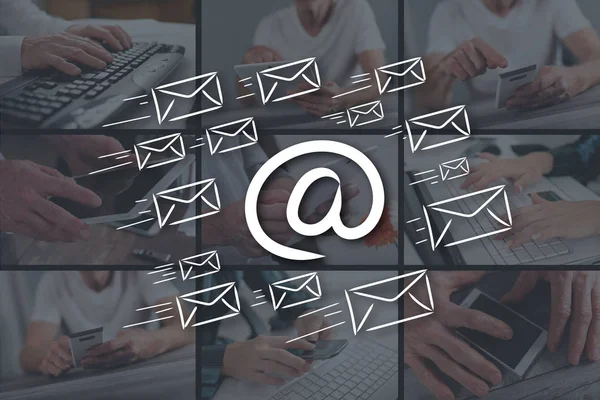DMARC Record Generator: Simplify Your Email Authentication Setup
Email security has become an increasingly critical concern for organizations and individuals alike. With the proliferation of phishing attacks, email spoofing, and other malicious activities, it is essential to implement robust email authentication mechanisms. One such mechanism is DMARC (Domain-based Message Authentication, Reporting, and Conformance). A DMARC record generator can significantly simplify the process of setting up and managing your DMARC records, ensuring better protection against email fraud and enhancing the overall security of your email communications.
Understanding DMARC
DMARC is an email authentication protocol that builds on two existing protocols: SPF (Sender Policy Framework) and DKIM (DomainKeys Identified Mail). It allows domain owners to publish policies regarding the handling of unauthenticated emails and provides a mechanism for receiving reports about email delivery and authentication failures.
The Role of a DMARC Record Generator
A DMARC record generator is a tool designed to simplify the creation of DMARC records. These records are essentially DNS (Domain Name System) entries that specify the domain owner’s DMARC policy. Manually creating and configuring DMARC records can be complex and error-prone, especially for those unfamiliar with DNS configurations and email authentication protocols. A DMARC record generator streamlines this process by providing a user-friendly interface that guides users through the necessary steps, ensuring accurate and efficient setup.
Key Features of a DMARC Record Generator
A good DMARC record generator offers several key features that make it an invaluable tool for domain owners:
![]()
User-Friendly Interface
One of the most significant advantages of using a DMARC record generator is its user-friendly interface. These tools are designed to be intuitive and easy to navigate, even for those with limited technical knowledge. The interface typically guides users through the process of creating a DMARC record, explaining each step and providing clear instructions.
Pre-Configured Templates
DMARC record generators often come with pre-configured templates that simplify the setup process. These templates include default settings that can be customized to meet the specific needs of the domain owner. By using these templates, users can avoid common pitfalls and ensure that their DMARC records are correctly configured from the start.
Real-Time Validation
To prevent errors and ensure the accuracy of the DMARC record, many generators include real-time validation features. These features check the record for common mistakes and inconsistencies, providing immediate feedback to the user. This validation process helps to identify and correct issues before the record is published, reducing the risk of misconfiguration.
Reporting and Monitoring
A comprehensive DMARC record generator often includes reporting and monitoring capabilities. These features allow domain owners to track the performance of their DMARC policy, receive reports on email authentication failures, and monitor potential threats. By analyzing this data, domain owners can make informed decisions about their email security strategy and adjust their DMARC policy as needed.
Benefits of Using a DMARC Record Generator
Implementing a DMARC record generator offers several significant benefits that contribute to enhanced email security and streamlined management.
Improved Email Security
The primary benefit of using a DMARC record generator is improved email security. By simplifying the process of creating and managing DMARC records, these tools help ensure that the domain’s email authentication mechanisms are correctly configured. This reduces the risk of email spoofing, phishing attacks, and other malicious activities, protecting both the domain owner and their recipients.
Enhanced Reporting and Visibility
A DMARC record generator’s reporting and monitoring capabilities provide domain owners with valuable insights into their email ecosystem. By receiving detailed reports on email authentication failures and potential threats, domain owners can gain a better understanding of their email security landscape. This enhanced visibility allows them to make informed decisions and proactively address any issues that arise.
Steps to Implement DMARC Using a Record Generator
Implementing DMARC using a record generator involves several straightforward steps:
- Choose a DMARC Record Generator: The first step is to choose a reputable DMARC record generator. Many online tools are available, offering various features and levels of support. Select a tool that meets your needs and provides a user-friendly interface.
- Enter Domain Information: Once you have chosen a DMARC record generator, enter your domain information into the tool. This typically includes your domain name and any subdomains you wish to protect.
- Customize DMARC Policy: Next, customize your DMARC policy using the generator’s interface. This involves selecting the desired policy for handling unauthenticated emails (none, quarantine, or reject) and specifying any reporting preferences.
- Generate and Publish DMARC Record: After customizing your policy, the generator will create the DMARC record. Review the generated record for accuracy and make any necessary adjustments. Once satisfied, publish the record to your domain’s DNS.
- Monitor and Adjust: Finally, monitor the performance of your DMARC policy using the reporting and monitoring features of the generator. Analyze the reports you receive and make any necessary adjustments to your DMARC policy to ensure optimal email security.
![]()
Common Challenges and How to Overcome Them
Despite the benefits of using a DMARC record generator, domain owners may still face certain challenges when implementing DMARC. Understanding these challenges and knowing how to overcome them can ensure a smoother setup process and more effective email authentication.
Misconfiguration Issues
One of the most common challenges is misconfiguration. Even with a DMARC record generator, mistakes can occur, leading to improper setup and reduced effectiveness of the DMARC policy. To avoid this, it's crucial to double-check all entries and settings during the setup process. Utilizing the real-time validation feature of the generator can also help identify and correct errors before publishing the record.
Lack of Understanding
A lack of understanding of how DMARC works can also pose a challenge. Domain owners need to be familiar with the basics of SPF and DKIM, as DMARC builds on these protocols. Many DMARC record generators provide educational resources and detailed explanations within their interfaces to help users better understand the process and make informed decisions. Check out this site for more details.

